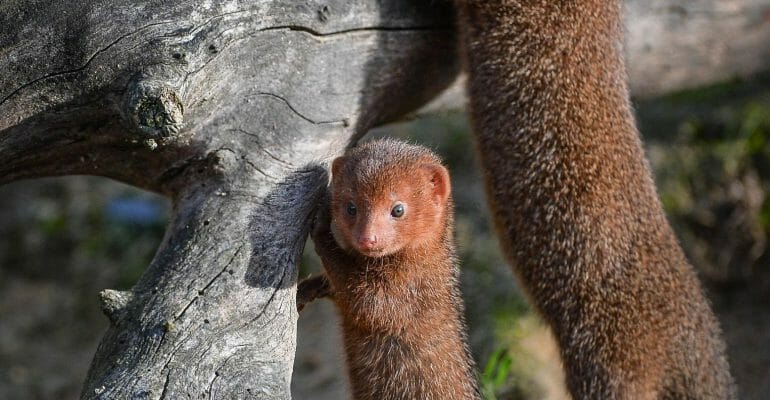MONGOOSE IN HAWAII
June 29, 2022 2023-09-18 21:22MONGOOSE IN HAWAII
Nat Geo Wild/National Geographic is one of my family’s favorite channels to watch because there are so many animal documentaries to choose from. My daughter is always asking why some animals are heartless, and why they have to kill other animals for food. Why do some people go to the trouble of capturing a wounded wild animal, treating it, and then releasing it back into the wild, despite knowing that such animals are dangerous and have killed people they know? Why do veterinary clinics exist to help wild animals? She has received answers to all of her questions, which has made her appreciate the value of animals in the world; she is now considering a career as a Veterinary Doctor so that she can help many sick animals.
Animals are an important part of our environment, and each animal (domestic or wild) has a role to play in maintaining a healthy ecosystem. While this is true, it is also true that some animals do better in their natural habitats and may cause problems in places where they are not supposed to be. A good example of this scenario is the introduction of the mongoose to Hawaii.
“Mongooses are primarily found in Africa, their range covering most of the continent. Some species occupy parts of southern Asia and the Iberian Peninsula. They are generally terrestrial mammals, but some are semi-aquatic, and others are at home in the treetops” – National Geographic
Depending on where they live, some Mongooses are about 7 inches long, while others are about 2 feet long. Their body is long and brown, with short legs, pointy ears, a long tail, and cat-like eyes. According to National Geographic, this animal (mongoose) is primarily found in Africa, parts of Southern Asia, and the Iberian Peninsula. They are carnivorous, eating reptiles, birds, frogs, insects, worms, and bird eggs. They are members of the Herpestidae family and can weigh up to 11 pounds. They live in colonies.
Mongooses are not native to the United States, but they can be found in only one location: Hawaii.
So, what exactly is the story behind Mongoose and Hawaii?
In the 1800s, Hawaii Island, also known as the Big Island, was well known for its vast sugarcane plantation, and because sugarcane attacks rodents due to its sweet nature, sugarcane farmers needed to devise a way to control or get rid of these rodents completely. These farmers may have made several attempts to alleviate the situation but to no avail.
In 1872, Hawaii Island sugarcane farmers came across an article about how Caribbean sugarcane farmers successfully dealt with the issue of rats on their sugarcane plantation. According to the article where this information is found, these Caribbean Farmers imported Mongooses from India and introduced them to their sugarcane plantation, and because Mongooses feed on rodents such as rats rather than sugarcane, this introduction has resulted in a significant decrease in the population of rats in their plantation and improved yields.
Despite disagreement from some Big Island Farmers, some suggested that more research be conducted to see if the same situation would work in Hawaii, while others believe there is no need and no time to conduct such research, believing that if it worked in the Caribbean, it will definitely work in Hawaii, after all the products are the same, they still went ahead and imported a few Mongooses from the Caribbean, about 72 Mongooses were first imported.
Following the introduction, another discovery was made: rats are only awake at night and mongooses are awake only during the day, so the two animals rarely cross paths.
These Mongooses need to eat, so since rats aren’t available, they had to look for other animals on their food chain that they could eat to survive, and they began feeding on birds and bird eggs, turtle eggs, and so on.
The Mongooses that were brought in to solve the rat problem never solved it and instead became a major challenge. The Mongoose was responsible for a significant decrease in both the bird and turtle populations in Hawaii. With the increase in the Mongoose population came a decline in the population of Hawaii’s native bird and turtle species.
Mongooses are not easily domesticated animals; they are aggressive when cornered and can attack with their teeth. This became a major issue in Hawaii as people began to build fences and set traps to keep the mongooses away from their homes because they no longer stay only in the bushes, but come out of the bushes in search of food. This problem has become so serious that the government must play a role in eradicating the threat of Mongoose infestation in their region. The Mongoose appear to have found a new home on Hawaii Island, where they will remain until a permanent solution is found.
Sources
https://www.nationalgeographic.com/animals/mammals/facts/mongooses
https://www.olaproperties.com/blog/lets-talk-story/the-story-of-the-mongoose-in-hawaii/
 |
Author : Amiakhor Beatrice Ejaeta |
























